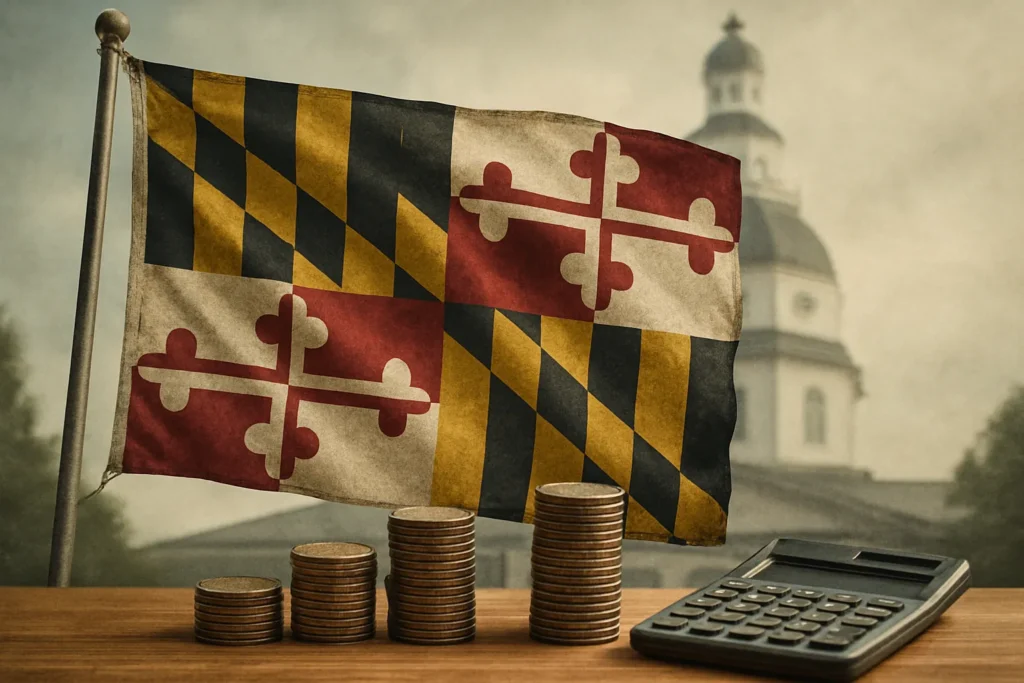A Shocking Step Down: Maryland’s Bond Downgrade and What’s at Stake
For more than half a century, Maryland stood as a gold standard in state fiscal management, boasting a triple-A bond rating from all three major rating agencies—Moody’s, Standard & Poor’s, and Fitch. That era drew to a close when Moody’s, for the first time since 1973, dropped the state’s credit rating from Aaa to Aa1. This subtle alphabetic shift conceals potent consequences for Maryland’s finances—higher taxpayer costs for infrastructure, schools, and public safety equipment now loom larger on the horizon.
Behind the downgrade lies a complex blend of fiscal realities and political narratives. The Moody’s report cuts through the spin: Maryland’s creditworthiness is diminished by its economic and fiscal underperformance compared to top-rated peers and, critically, its elevated vulnerability to shifting federal priorities. Possessing roughly 160,000 federal civilian employees—about 6% of its workforce as of early 2025—Maryland’s budget health is tightly coupled to the federal government’s fortunes. So when national leadership slashes federal jobs or funding, the ripple effects reverberate from Baltimore to Bethesda.
Historical parallels run deep. In the 1970s and 1980s, states with concentrated defense or aerospace sectors learned what happens when Washington’s winds shift. Maryland, much like California’s aerospace-dependent regions during the Cold War wind-down, finds itself exposed. The state’s top officials, aware of this precarious relationship, have become entangled in a blame game as intense as any Beltway standoff.
The Political Blame Game: Democrats, Republicans, and Federal Fallout
Statehouse corridors echoed with dueling statements after the downgrade. Governor Wes Moore and Democratic leaders swiftly pointed to the legacy of federal workforce cuts under President Donald Trump as the root cause of Maryland’s fiscal woes. Their case isn’t without precedent: According to a recent Pew Research study, the Trump administration’s push to trim federal agencies indeed led to a net loss of thousands of jobs in the D.C. metro region. In Maryland, where federal employment forms such a critical backbone, this translated into sagging income tax receipts, declining consumer demand, and broader fiscal stress.
What do the Republicans say? Senate Minority Leader Steve Hershey and fellow conservatives have seized the opportunity to decry “reckless spending, bloated budgets, and an economy hollowed out by overregulation.” Their argument: Blue-state policies—especially those favoring increased social spending and ambitious infrastructure—left Maryland vulnerable when federal support waned. In their view, Democrats are scapegoating Trump instead of reckoning with their own structural fiscal gaps. The facts bear out that Maryland faced a staggering $3.3 billion budget deficit this past cycle, forcing lawmakers to cut 9% of open state jobs, transfer $419 million from the Rainy Day Fund, and raise taxes to plug holes.
But whose narrative tracks closer to reality? Harvard economist Jane Bolen told CNN last week, “States with outsized dependence on any single sector, whether federal, tech, or energy, set themselves up for trouble when that sector falters. It’s not inherently a partisan problem—it’s a risk management problem.”
The backdrop: Maryland’s reliance on federal employment is a bipartisan creation, the product of decades of leaders—Democratic and Republican alike—chasing the economic stability that federal installations bring. Couple that with national trends toward remote work, hollowing downtown office districts, and you have a one-two punch jeopardizing commercial property values and local tax revenues.
“The downgrade is a wake-up call. Maryland’s strengths remain, but overdependence on Washington’s payroll leaves us all hostage to distant political winds.”
Consequences for Public Good: Who Pays the Price?
Behind the technical language of credit ratings, real-world consequences begin to emerge. A lower bond rating will mean higher borrowing costs for everything from new bridges and schools to hospital upgrades—projects that form the backbone of community welfare. The AAA rating wasn’t just a badge of honor. It kept financing costs low, freeing up more resources for public services rather than interest payments to Wall Street.
This is no abstract budgetary skirmish; working families will feel the impact directly. Republican doomsaying about a “financial death spiral” may be hyperbolic, but even modest upticks in interest rates can drain millions from Maryland’s annual budget. According to the state’s own numbers, the June 11th bond sale alone could see interest costs rise, adding to the tax burden or forcing further service cuts. Every dollar spent servicing debt is a dollar unavailable for classrooms, ambulances, and road repairs.
Beyond that, the downgrade spotlights a national challenge: federal budget chaos reverberates through state and local economies. Maryland’s predicament sharpens the case for progressive, diversified growth strategies—ones that lean less on federal largesse and more on building resilient sectors like green tech, biotech, and advanced manufacturing.
Resilience, not retrenchment, must be the long-term answer. The temptation to cut and squeeze public services—instead of investing boldly in education, environmental restoration, and workforce training—would be a betrayal of Maryland’s values. Lessons from other states are clear. Take Massachusetts post-2008: Facing credit pressure, it chose targeted spending in technology and higher education, propelling an economic renaissance that expanded the tax base and restored fiscal health.
Is Maryland ready to chart a similar path?
Now, at this crossroads, the public will judge whether leaders address root causes or simply assign blame. Structural reforms—curbing overreliance on federal jobs, diversifying high-wage opportunities, and restoring fiscally progressive policies—offer the best hope. As the debate rages, one thing is certain: the era of effortless AAA borrowing is over, and every Marylander has a stake in what comes next.

